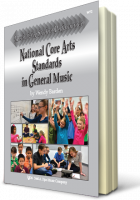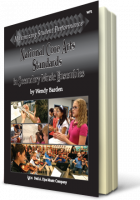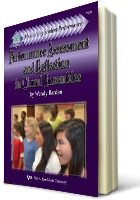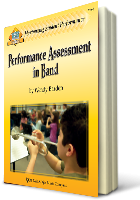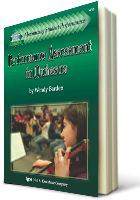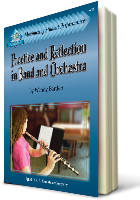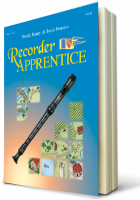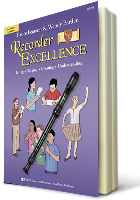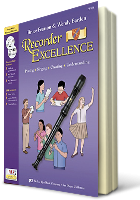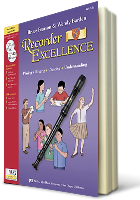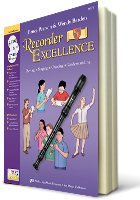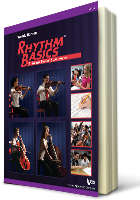Standards-Based… Grading
Standards-based grading is on the minds of many music educators these days. (Usually not in a good way, I might add.) That’s because standards-based grading is on the horizon in countless school districts across the country, and has already been implemented in many, many more.
I’m among the implementers. I’ve worked in a standards-based system for seven years. The first four years I wore the hat of district music administrator, and since retiring I have taught part-time at the high school level. I don’t pretend to have any answers, but I can share 10 first-hand observations and lessons learned relative to K-12 music classrooms.
Start with a general understanding. The main purpose of standards-based grading is to compare student achievement/performance to a standard (rather than to each other). The intention is also to communicate better and more accurate information about achievement to students and parents. And with that:
1. Here’s the problem with traditional grading practices: What do grades mean? In music, grades might be a combination of scores on performance assessments or written theory tests, recognition of improvement, attitudes or effort, the number of weekly practice minutes, and/or concert attendance. If students receive an A, is it because they are skilled, knowledgeable musicians? Is that what parents (and others) assume? In elective classes, if students don’t get an A, will they quit? Big questions.
2. Standards-based grading is only the tip of the iceberg. Standards-based curriculum determines what students should know and be able to do. Our standards-based instruction supports students to achieve the standards. With standards-based assessment we gather evidence of learning that is tied to the standards. And only then comes standards-based grading which represents the degree to which students demonstrate proficiency in the standards.
3. The “standards” refer to state standards, new National Core Arts Standards in music, locally developed standards, or a combination of the three. Look at the many standards addressed in your curriculum, and group them into three or four reporting standards. I think of each reporting standard as a “bucket,” and my grade book is labeled and organized so that every assignment fits into one of the buckets. Ideally on the report card there is a mark for each reporting standard. This happens more often in elementary grades. On the vast majority of report cards in middle or high school, there is one overall mark per subject.
4. Gather evidence of student achievement on the standards in both formative and summative assessments. Formative assessment takes place in the middle of learning—when there’s still time to improve—and helps us determine next steps in instruction. This is also a critical time for students to get specific feedback so they know what they are doing well, what needs more work, and exactly what they can do to improve. Summative assessment documents what students have learned. An ongoing question, in standards-based grading or not, is how to manage individual student assessment when the music class is set up as a group or large ensemble performance experience. Can you put technology to use? For more ideas, see the Maximizing Student Performance books listed below.
5. In standards-based grading, formative assessments contribute a small percentage of the grade (if any), but they are very important in scaffolding toward the summative assessment. By the time students reach the summative, they have had lots of time to develop the knowledge or skills, and there are no surprises. Be aware. Because formative assessment (homework?) doesn’t “count” in the grade, students sometimes get the idea they don’t need to do it… but then find they aren’t as successful as they might have been in the past.
6. One way to focus more on learning than on the grade is for students to have multiple opportunities to take an assessment (yes, within reason). My students understand that additional work or practice is always needed prior to a retake opportunity. Colleagues and I created “retake tickets” that students must complete before they are eligible to retake an assessment: What skills did you continue to work on? What strategies did you use to improve? In the case of a written test, the retake might not look the same as the original. It could even take the form of short conversation about the previously missed concept. Sometimes I simply continue to work on a skill or concept in class in a little different way, and if students Meet Standard on the subsequent assessment I disregard the previous score.
7. Achievement is articulated in levels of performance using rubrics rather than percentages. No problem! We use rubrics all the time! In standards-based grading there are often four levels of achievement to the rubrics, and they could be labeled in various ways such as Above Standard—Meets Standard—Partially Meets—Does Not Meet. Or, Advanced—Proficient—Nearing Proficient—Developing. Numbers such as 4—3—2—1 (or with decimal places, too) may also accompany the word labels because that’s what many electronic grade books can track. We want all students to work toward the level of Meet Standards / Proficient / 3. For a given music standard, what does that look like?
8. Does the report card still show letter grades? If levels of performance (Advanced—Proficient—Nearing Proficient—Developing or 4—3—2—1) are translated into a traditional a letter grade, I strongly recommend your district adopt a conversion chart developed by one of the experts. As an example, see page 106 in Marzano’s book listed below. Proficient / 3 is not the same as the traditional 3.0 Grade Point Average (GPA).
9. Still require your students to record their practice minutes? Time matters when you are trying to develop endurance. Otherwise, it doesn’t matter if a student practices their music 5 minutes or 55 minutes. However long it takes to master a passage is how long you should expect. What might it take to shift your focus and that of your students’ away from counting minutes to thinking about what they accomplished and next steps? Again, there are many ideas in the Maximizing Student Performance books below.
10. Finally, in my district we created a [locally developed] standard to acknowledge the competencies behind one’s contribution to the ensemble in band, choir, or orchestra classes. There are formative self-assessment tools for students and formative/summative tools for teachers, and evidence we gather is observable including, “I mark the music to help me perform our interpretation,” and “I am ready to sing/play my part each time it enters.” The descriptors in the rubric are Independently—With occasional reminder—With some reminders—Frequent reminders needed/Not yet demonstrated. I should also mention that the physical education department followed our lead and developed a similar standard for their team sports units.
Yes, and… My list of 10 observations is just a place to start. From study and experience, it seems to me there is the “ideal” standards-based system, and then there is what’s possible within the parameters of a given district. Each of our situations is a little different. So, Learn—Think—Collaborate. By all means, join the conversations to help shape standards-based curriculum, instruction, assessment, and grading in your district.
Thanks for pausing with me for a few minutes in your busy week. Have a good one!
____________________
Barden, Wendy. Performance Assessment and Reflection in Choral Ensembles. San Diego: Kjos Music Press (2011).
Barden, Wendy. Performance Assessment in Band. San Diego: Kjos Music Press (2009).
Barden, Wendy. Performance Assessment in Orchestra. San Diego: Kjos Music Press (2009).
Barden, Wendy. Practice and Reflection in Band and Orchestra. San Diego: Kjos Music Press (2010).
Barden, Wendy. Recorder Apprentice. San Diego: Kjos Music Press (2013).
Barden, Wendy. Rhythm Basics. San Diego: Kjos Music Press (2012).
Guskey, Thomas R., ed. Practical Solutions for Serious Problems in Standards-Based Grading. Thousand Oaks: Corwin (2009).
Guskey, Thomas R. and Jung, Lee Ann. Answers to Essential Questions About Standards, Assessments, Grading, & Reporting. Thousand Oaks: Corwin (2013).
Heflebower, Tammy and Hoegh, Jan K. A School Leader’s Guide to Standards-Based Grading. Bloomington, IN: Marzano Research Laboratory (2014).
Jung, Lee Ann and Guskey, Thomas R. Grading Exceptional and Struggling Learners. Thousand Oaks: Corwin (2012).
Marzano, Robert J. Formative Assessment & Standards-Based Grading. Bloomington, IN: Marzano Research Laboratory (2010).





